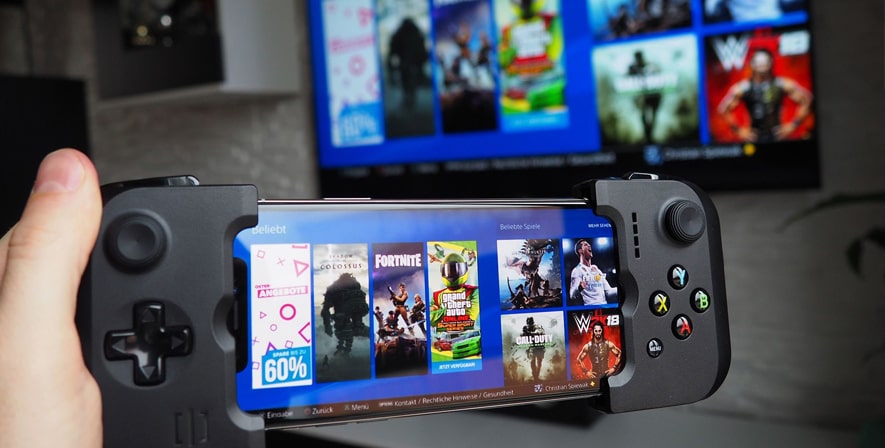Choosing Devices for Game Testing: How to Play this Game?
by Viktoria Byk | August 27, 2019 8:01 am
Today’s players know what they want. They are familiar with the quality of the graphic, scenarios, and strategies of games. Talking shortly, users know how to recognize a great job of a developing team and a video game testing department.
For experts of QATestLab, it is always a pleasure to help developers to make their projects better. We do it quickly with the 13-years experience in the field of quality assurance and with the big base of devices. We are glad to share experience in testing the products of the gaming industry and reveal the main secrets of its success on the real-case example.
Business Goals that Form the Game Testing Scope
Our Client, European game development company, applied to QATestLab with the problem of functional bugs and crashes of the game (a football manager simulator for iOS and Android). The game was already at stores but had hard to define bugs that users noticed. But there was no information about what exact devices and platforms the problems occurred and why. That led to negative user reviews and financial loss.
Being focused on the user experience as the key value, the main aim of the Client was to receive positive user reviews and feedbacks. To reach the set goals, QA engineers should always test multiple elements of a game:
 [1]
[1]
Company owners contacted us because of the game issues that appeared from nowhere. There was no information on which devices the bugs were reproduced.
Basically, we got a math quiz. We got:
y = x × d
Where y – solution, x – how many QA engineers we got for this case and d – necessary devices. So, here are spoilers: x = 5 our testers and d = 40 devices where bugs were founded.
The difficult quiz needs preparation before the start of work with it. We understood that testing games needed more than having devices and experience, so we worked hard at putting together an efficient test strategy and games testing job. And we needed to analyze it more as a business case than a game. That’s why capability, usability, and functional tests were done.
With no doubt, the project’s team did a great job by planning the Game Testing strategy.
Game Testing Strategy: What tests to execute?
QATestLab team has the rule to estimate the time and material needed for the achievement of set goals before the project start. The next step, in this case, was the creation of a device matrix that included 40 devices with different OS, manufacturer, and screen resolution. The matrix was adjusted to provide the most effective device coverage at a minimal cost. And we mean it. We are humble but glad to say about the finest QA experts. They made up such a great test case to find the bugs in a few days!
As for the testing scope itself, it is usually defined according to the product characteristics and client’s aims. In case of the football manager simulator, QATestLab specialists conducted the following tests (after the Client’s approval of the designed test plan).
Сompatibility testing
Using 40 devices from the predefined device matrix, QA engineers detected issues on some of them in one single day. To define the origin of each issue, the QA team[2] conducted testing on different devices with the same OS, screen resolution, manufacturer, and processor. That helped to discover the same problems on related devices.
 [3]
[3]
In this way, critical bugs were detected on the maximum number of devices in the shortest term.
Functional testing[4]
To provide full test coverage, we predicted all followed standard and non-typical scenarios. Our team evaluated the declared game functionality, including game flow, the logic of achievements, mechanism of in-game advertising, etc.
Usability testing
To evaluate the game on the part of its target users, usability testing was conducted. The team evaluated UI, elements layout, sound, and video effects. Our team performed tutorial testing to estimate its clarity and consistency.
 [5]
[5]
While testing, QA engineers continuously verbalized their thoughts and impression on the game. That closely modeled the game perception by its end users and provided the client with real feedback.
What Deliverables to Expect
As a result of QATestLab testing activities, the Client got a clear understanding of what issues are typical for certain devices. Also, the QA team provided detailed bug reports (including logs in case of app crashes), videos of the testing process feedback from test engineer, suggestions on improvements from the experienced players.
The fix of the detected bugs significantly improved user experience on numerous devices and helped to gain customer loyalty. The Client received many positive user reviews and a high rating on distribution services. Now the game is taking leading positions on the market and continues to expand its audience. What about us? We still carry on this project and are working on its improvement. Subscribe to our blog to get more useful experience and advice.
Learn more from QATestLab
Related Posts:
- [Image]: https://blog.qatestlab.com/wp-content/uploads/2019/08/game-test-check.jpg
- QA team: https://blog.qatestlab.com/2019/05/07/building-qa-team/
- [Image]: https://blog.qatestlab.com/wp-content/uploads/2019/08/capability-testing-devices.jpg
- Functional testing: https://blog.qatestlab.com/2015/07/22/goals-functional-testing/
- [Image]: https://blog.qatestlab.com/wp-content/uploads/2019/08/usability-testing-device.jpg
- Automation Testing for Mobile Apps: Why It’s Essential and Our Key Services: https://blog.qatestlab.com/2025/05/13/automation-testing-for-mobile-apps-why-its-essential-and-our-key-services/
- Testing on Real Devices — Just an Option or a Necessity?: https://blog.qatestlab.com/2025/01/08/real-testing-devices/
- 5 Most Troublesome Mobile App Bugs to Avoid: https://blog.qatestlab.com/2023/06/21/mobile-app-bugs-2/
Source URL: https://blog.qatestlab.com/2019/08/27/devices-game-testing/

